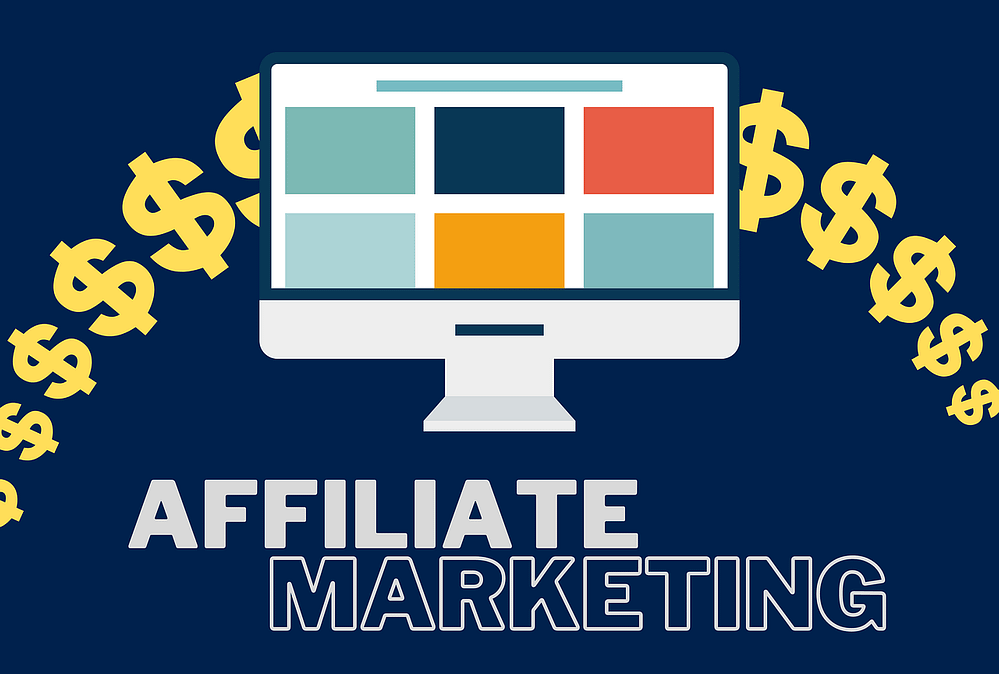What is Affiliate Marketing? Why You Should Care and Where to Start
Affiliate marketing is like matchmaking for products and customers — except instead of awkward dinner dates, you connect people with items or services they actually want, and you get paid for it.
When I first heard about affiliate marketing, I thought it was one of those internet scams that promised you millions while you sipped margaritas on a beach. My cousin even laughed at me when I said I was going to try it. But when my first commission — a glorious $3 from a phone charger — hit my account, I celebrated like I had just won the lottery. Yes, I may have spent it on a meat pie, and no, I don’t regret it. That tiny win proved that affiliate marketing works.
Table of Contents
If you’ve ever wondered how bloggers, YouTubers, or even TikTok creators make money without selling their own products, affiliate marketing is often the secret sauce. And the best part? You can do it too.
What is Affiliate Marketing?
Let’s break it down without jargon.
Affiliate marketing is a performance-based business model where a company rewards you (the affiliate) for sending customers their way. It’s tracked using a unique link, often with cookies (the internet kind, not the chocolate chip kind — sorry to disappoint).
The players in affiliate marketing are:
- Affiliate (You) – Promotes the product.
- Merchant (The Seller) – Offers the product/service.
- Customer (The Buyer) – Purchases through your link.
- Affiliate Link – Tracks that you made the sale.
Think of affiliate links like name tags at a party. When someone buys using your tag, the host knows you brought them — and slips you a thank-you check.
In traditional sales, you go out and sell face-to-face. In affiliate marketing, you use content — blog posts, YouTube videos, social media — to reach people at scale.
Example: You review “The Best Budget Laptops of 2025” on your blog. You link to those laptops using Amazon Associates affiliate links. Someone clicks, buys, and you earn a commission. Easy math, zero inventory.
For more basics on how digital marketing works as a whole, you can also check out our guide: What Exactly is Digital Marketing? Why You Need It and How to Start.
Why You Need Affiliate Marketing
This isn’t just “nice to have” — it’s one of the easiest and most flexible ways for beginners to make money online. And yes, you can start with zero coding knowledge and a tiny budget.
1. Low Startup Costs (The Wallet-Friendly Side Hustle)
Unlike traditional businesses, you don’t need inventory, storage, or expensive equipment. You just need:
- A device (phone, laptop, or tablet).
- An internet connection.
- A single place to display your links (blog, YouTube, or social media).
When I started, my “investment” was a cracked old laptop and free WordPress hosting. My first sale? That humble $3 phone charger commission. It wasn’t glamorous, but it was proof of concept — and it lit the fire to keep going.
Want to compare hosting options for your affiliate website? We wrote a fun beginner’s guide: What Exactly is Bluehost?.
2. Passive Income (Make Money While You Sleep… Or Nap)
You can earn from old content as long as it’s online and people still find it useful.
For example, I wrote a headphone review in 2021. To this day, that article brings in commissions. I’ve been paid while on the bus, at the gym, and even during an unfortunate dentist appointment. (The drill was loud, but the commission notification made it better.)
Passive income doesn’t mean zero work. It means you do the heavy lifting once, and then it pays you repeatedly.
3. Scalable & Flexible
You can start with one product and eventually have hundreds of affiliate links spread across blog posts, videos, and emails. And you can work from:
- Home.
- A coffee shop.
- A hammock on a tropical island (as long as you actually have Wi-Fi).
It’s business without borders.
4. Beginner-Friendly
You don’t need coding skills, an MBA, or a marketing degree. Most affiliate programs are free to join, and there are endless free tutorials online. If you can write, talk, or create videos about things you like, you can be an affiliate marketer.
For more beginner-friendly online income ideas, check out our post on What is PaidViewpoint and How Can I Earn from It?.
How to Start Affiliate Marketing (Step-by-Step)
Here’s your no-fluff, “grandma could follow it” guide.
Step 1: Pick Your Niche (The Goldilocks Rule)
A niche is your specific topic area. Too broad? You’ll drown in the noise. Too narrow? You’ll run out of things to promote.
Good niches:
- Budget tech for students.
- Healthy cooking for busy parents.
- Fitness for beginners.
Bad niches:
- “Everything” (confuses your audience).
- “Stuff I randomly like” (no focus).
Pro Tip: I wasted three months writing about random gadgets nobody cared about. The moment I niched down to laptop reviews, my sales doubled. People trusted me more because I wasn’t trying to be “the jack of all trades.”
Step 2: Choose Affiliate Programs
Once you know your niche, you need to partner with companies offering affiliate deals.
Popular beginner programs:
- Amazon Associates – Huge product range, trusted brand.
- ClickBank – Digital products (courses, eBooks).
- CJ Affiliate – Big-name brands.
- ShareASale – Thousands of merchants.
When starting out, pick programs that actually fit your niche. If you’re in tech, go with Amazon and electronics retailers. If you’re in fitness, maybe go with supplements or workout gear companies.
Step 3: Build Your Platform
Where will you promote your affiliate links? Options include:
- Blog – Great for SEO and long-term growth.
- YouTube – Perfect for reviews/tutorials.
- Social media – Instagram, TikTok, Facebook groups.
- Email list – Builds loyal followers.
If you want traffic that keeps coming years later, go for a blog or YouTube channel. Social media posts vanish quickly.
Need help picking the right platform? Read our guide: What is Wix Web Builder?.
Step 4: Create Quality Content (No Spam Allowed)
Your content is your sales engine. But don’t just drop links — be genuinely helpful.
Content ideas:
- Product reviews (“Best Budget Laptops 2025”).
- Comparisons (“MacBook Air vs Dell XPS”).
- Tutorials (“How to Build a Budget Gaming PC”).
- Roundups (“Top 10 Affordable Kitchen Gadgets”).
When I reviewed my first microphone, I didn’t just post a link. I tested it, shared audio samples, explained pros/cons, and even suggested who it was for. That kind of honesty builds trust — and trust drives sales.
Step 5: Place Links Smartly
Put affiliate links right after mentioning benefits or in call-to-action spots.
Example:
“This is my favorite headset — you can grab it here.”
Always disclose your affiliate links. Not only is it legally required in many countries, but it also builds trust with your audience.
Step 6: Drive Traffic (Your Content Needs Visitors)
Without visitors, your content won’t earn. Simple as that.
Traffic strategies:
- SEO – Use keywords naturally in titles and headings.
- Social media – Post where your audience hangs out.
- Email marketing – Share updates with helpful tips + links.
- Paid ads – If you have a budget.
When I learned just the basics of SEO, my blog went from 20 visitors a day to over 200 — without spending a dollar on ads. For more tips, check out: Why is Your Website Not Ranking High on Search Engines?.
Step 7: Track & Improve
Check which content and products perform best using tools like Google Analytics or your affiliate dashboard.
Example: I noticed one blog post was responsible for 80% of my sales. So I wrote three more similar posts. My income doubled in just two months.
Common Mistakes Beginners Make
- Promoting everything – Stick to your niche. I once slapped affiliate links on blenders, shoes, and even dog food (I don’t own a dog). Unsurprisingly, I got zero sales.
- Ignoring SEO – Without it, your content is invisible.
- Quitting too soon – It can take months before you see consistent results.
- Spamming links – This kills trust and engagement instantly.
Tools Every Beginner Affiliate Marketer Should Use
- WordPress – Build your blog (learn more about hosting here).
- Canva – Create eye-catching graphics.
- Grammarly – Write error-free content.
- Google Keyword Planner – Find what people actually search for.
- Bitly – Shorten and track link clicks.
Final Thoughts
Affiliate marketing is simple, but not instant. Think of it like planting a garden:
- You prepare the soil (niche).
- Plant seeds (content).
- Water them (traffic).
- Wait for growth (sales).
My first commission was $3 from a phone cable. My biggest single commission so far? Over $200 from one software sale. Both felt amazing — one proved the model works, the other proved it scales.
If someone like me — who once thought HTML was an energy drink — can make money with affiliate marketing, then you can too. Stay consistent, be transparent, and focus on helping your audience. That’s how you turn affiliate marketing from a side hustle into a long-term income stream.
Hi, I’m Prince Stephen Mordi, the mind behind Voob.com.ng. I write simple, beginner-friendly guides on tech, blogging, and making money online. My goal is to help you navigate the internet without headaches—because tech doesn’t have to be complicated!


